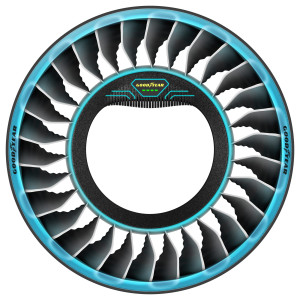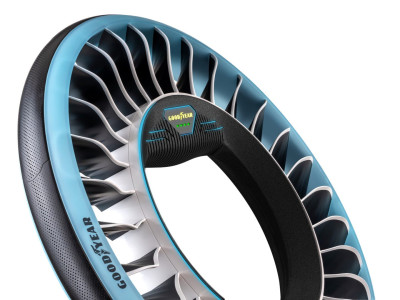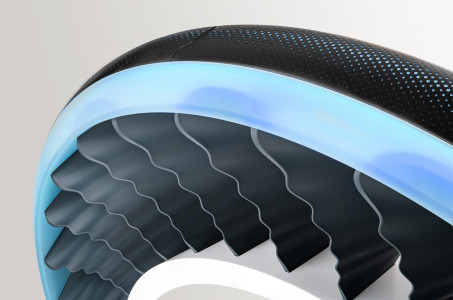
WHY THIS MATTERS IN BRIEF
Flying taxis are arriving, albeit in drone form, but the dream of actual flying cars is far from dead.
 Interested in the future and want to experience even more?! eXplore More.
Interested in the future and want to experience even more?! eXplore More.
If you watch any science fiction movie none of the flying vehicles or cars look like today’s multi-rotor drones, or flying taxi’s as they’re becoming known as they lift off in Dubai. So if we really are going to realise this sci fi future then, according to Goodyear at least, cars will need at least two things – tires for driving on the road, like the levitating ones they proposed a couple of years ago for self-driving cars, and propellers for flying through the air.
As a result the company have just unveiled their latest concept and combined the two in their new Aero concept. Currently on display at the company’s head office the physical prototype has a wrap around rubber tread for traction, but it lacks a pneumatic air chamber. Instead, its integrated spokes flex to absorb shocks, while still being strong enough to support the weight of the vehicle.
Courtesy: Goodyear
The idea is that as long as the car is moving along the road, all four Aeros remain perpendicular to the asphalt. Once it’s time for a vertical take-off, however, two of the tires, at opposite corners of the vehicle, swing out to sit parallel to the road. They then start spinning, with the spokes now serving as rotor blades that create enough lift to get the car off the ground. The other two tires subsequently also swing out and spin up, allowing for a full quadcopter-style take-off.
After the vehicle becomes airborne, the Aeros then tilt to face forward, becoming propellers for fast forward flight.
Because the tires would need to rotate very quickly for long periods of time, they’d utilize a zero-friction magnetic propulsion system. They would also incorporate fiber optic sensors to monitor road conditions, tread wear and overall structural integrity. Data from those sensors, and from vehicle-to-vehicle and vehicle-to-infrastructure communication systems, would be analyzed by an onboard artificial intelligence processor – it would in turn advise if the vehicle should be driven or flown, based on the circumstances.
Source: Goodyear





















